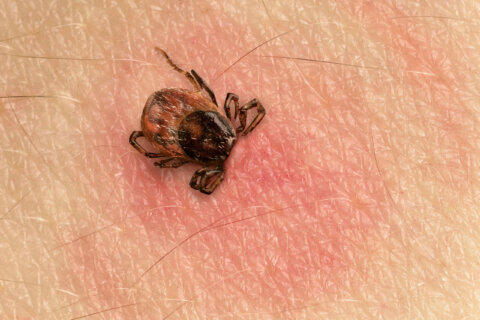Migraines affect more than 15% of people in the U.S., and parents should know the first attacks can happen with teens or kids even younger, a Virginia neurologist says.
“Now, more than ever, in the stressful times we live in, teenagers are having migraines,” said Dr. Sommer Ebdlahad, a neurologist at the Virginia Spine Institute.
Even before the pandemic, about 10% of school-age children and up to 28% of teens between 15 and 19 suffered from migraines, according to the Migraine Research Foundation.
Common triggers for migraines include stress, irregular sleep patterns and female hormonal changes. Women are three times more likely to suffer migraines then men.
Before turning 17, up to 23% of girls and 8% of boys have experienced a migraine.
Less common migraine triggers involve foods such as artificial sweeteners, soft cheeses, chocolates, alcohol and caffeine.
To help people avoid whatever might be setting off or exacerbating their symptoms, Ebdlahad recommends they keep a migraine journal. “And then, after several migraines, patterns will emerge, like, ‘Oh! I always have a migraine when I eat this one food, or when I drink something or when I’m stressed out,'” Ebdlahad said.
So, what can help?
The most common trigger Ebdlahad sees is stress, so exercise is what he typically recommends first.
“Because exercise will metabolize your stress hormones and get them out of there, and it’ll get the endorphins flowing to help make you feel better,” he said.
Other ways to reduce stress include breathing exercises, meditation or yoga — “whatever works for people.”
The second most common trigger Ebdlahad sees is irregular sleep schedules.
“The brain, just like any other part of your body, needs sleep to heal and repair and remove all the inflammatory damage that happened during the day, ” Ebdlahad said. “So, I’m talking about seven to eight hours of sleep regularly at the same time of day as much as possible.”
Migraines can be debilitating and symptoms include increased sensitivity to light, noise and odors, as well as nausea and vomiting.
Ebdlahad recommends seeking emergency care if:
- Your whole head hurts with the worst pain you’ve ever had.
- You suddenly lose strength in one side of your body.
- You suddenly lose vision.
“If it’s a headache, if it’s a migraine, and they’re starting to have more and more of them, to the point where the migraines are limiting what they want to do with their lives, then it’s time to see a neurologist,” Ebdlahad said. “Because we can treat this; we can make it better and we can hopefully improve their quality of life as well.”
- Sign up for WTOP alerts
- Latest coronavirus test results in DC, Maryland and Virginia\
- Some DC indoor pools and fitness centers reopening Oct. 13 with restrictions
- DC charters offer innovations in pandemic-era education
- Number of divorce cases in DC area surge amid coronavirus pandemic
Looking for more information? D.C., Maryland and Virginia are each releasing more data every day. Visit their official sites here: Virginia | Maryland | D.C.








